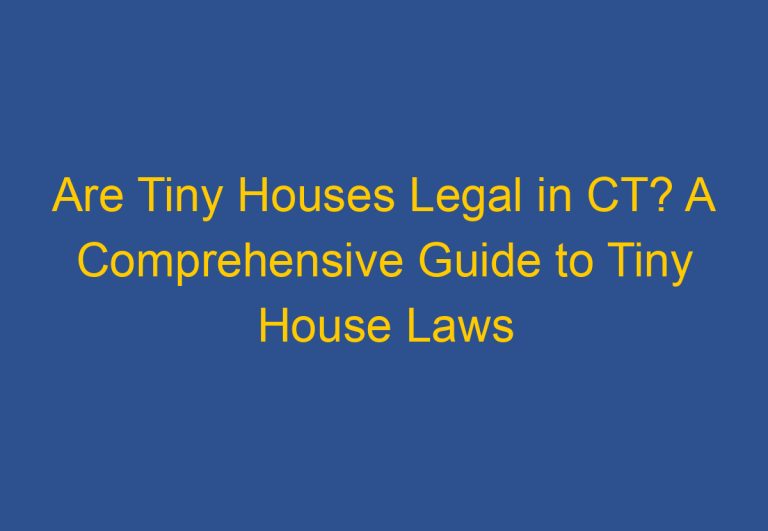What Are These Tiny Red Bugs in My House? A Comprehensive Guide to Identifying and Dealing with Them
Tiny red bugs can be a common sight in many homes, especially during the warmer months. These pests can be quite a nuisance, as they can quickly multiply and infest different areas of the house. Homeowners may be left wondering what these tiny red bugs are and how to get rid of them.

One common type of tiny red bug that can be found in homes is the clover mite. These mites are typically no bigger than a pinhead and can be identified by their bright red color. Clover mites are arachnids and do not have actual antennae, but they hold their front legs in front of their bodies like antennae. While clover mites are not harmful to humans or pets, they can leave behind red stains when squashed.
It is important to properly identify these tiny red bugs before attempting to get rid of them, as different types of bugs may require different treatment methods. Homeowners can take steps to prevent these pests from entering their homes, such as sealing cracks and crevices, reducing outdoor humidity, and removing any potential food sources.
Identifying the Tiny Red Bugs in Your Home

If you’ve noticed tiny red bugs in your home, you may be wondering what they are and where they came from. These bugs are commonly known as clover mites and are a type of arachnid, not an insect. They are small, no bigger than a pinhead, and have eight legs.
Characteristics of Clover Mites
Clover mites are typically a rusty red color, but they can also be brown or olive green. They hold their front legs in front of their bodies like antennae, although they do not have actual antennae. When squashed, clover mites leave behind a red stain. Eggs and immature clover mites are bright red.
Common Habitats and Behavior
Clover mites are active in the spring and fall and are attracted to warm, sunny areas. They feed on plants and can become a nuisance when they move indoors, usually due to changes in temperature or humidity. Clover mites are harmless to humans and do not bite or cause any damage to homes or belongings.
If you suspect you have a clover mite infestation in your home, it is best to contact a pest control professional for treatment. However, there are some steps you can take to prevent clover mites from entering your home, such as sealing any cracks or gaps in windows and doors, reducing moisture in and around your home, and removing any plants or vegetation near your home that may attract clover mites.
Effective Strategies for Prevention and Control

Preventative Measures for Your Home
To prevent an infestation of tiny red bugs in your home, there are several measures you can take. The first step is to identify the entry points for these bugs. Usually, they enter through cracks, doors, windows, and other openings in the walls and foundation. Once identified, seal these entry points with caulk or other sealants. This will prevent the bugs from entering your home in the first place.
Another important step is to maintain a clean and tidy home. Vacuum regularly, especially in areas where these bugs are likely to hide, such as carpets, rugs, and furniture. Use a vacuum cleaner with a high-efficiency particulate air (HEPA) filter to ensure that the bugs are trapped and not released back into the air.
In addition to sealing entry points and vacuuming regularly, it is also important to maintain a dry and well-ventilated home. These bugs are attracted to humid environments, so it is important to keep the humidity levels low. Use a dehumidifier if necessary, and fix any leaks or water damage in your home.
Treatment Solutions for Infestation
If you already have an infestation of tiny red bugs in your home, there are several treatment solutions available. The first step is to identify the areas where these bugs are hiding. Look for them in crevices, cracks, and other hidden areas.
Once identified, you can use a pesticide specifically designed for these bugs. Follow the instructions carefully, and make sure to apply the pesticide in the areas where the bugs are hiding. You can also use a non-toxic solution, such as a mixture of water and dish soap, to kill these bugs.
Another effective treatment solution is to create a perimeter around your home using a pesticide or insecticide. This will prevent these bugs from entering your home in the first place. Make sure to apply the pesticide or insecticide in areas where these bugs are likely to hide, such as around the foundation of your home.
Overall, prevention is key when it comes to controlling an infestation of tiny red bugs in your home. By following these preventative measures and treatment solutions, you can effectively prevent and control these bugs in your home.
Frequently Asked Questions

How can I identify the tiny red bugs in my house?
The tiny red bugs found in homes are commonly known as clover mites. They are small, usually no bigger than a pinhead, and are often found on windowsills, walls, and other surfaces. Clover mites have eight legs and are arachnids, not insects. They are usually reddish-brown in color but can also be olive green or brown.
What steps should I take to remove tiny red bugs from my home?
To remove tiny red bugs from your home, start by vacuuming up any visible mites. Be sure to empty the vacuum bag or canister outside to prevent the mites from re-entering your home. You can also use a damp cloth to wipe down surfaces where the mites have been seen. It is important to seal any cracks or gaps in windows, doors, and walls to prevent the mites from entering your home in the future.
Are the small red bugs found indoors dangerous to humans or pets?
Clover mites are not harmful to humans or pets. They do not bite, sting, or transmit diseases. However, they can be a nuisance and can cause staining on surfaces when crushed.
What are the common habits and habitats of tiny red bugs found near homes?
Clover mites are commonly found in lawns, gardens, and other areas with vegetation. They feed on plants, including clovers and grasses. When the weather becomes too hot or dry, clover mites may migrate indoors in search of cooler temperatures and moisture.
Why are there tiny red bugs on my concrete surfaces, and how can I manage them?
Clover mites are attracted to concrete surfaces because they provide a cool and moist environment. To manage clover mites on concrete surfaces, you can use a hose or pressure washer to wash them away. You can also use an insecticide labeled for use on clover mites.
What could be the cause of tiny red bugs appearing in large numbers outside my house?
Clover mites may appear in large numbers outside your house due to a variety of factors, including weather conditions, vegetation, and moisture. To prevent clover mites from entering your home, it is important to seal any cracks or gaps in windows, doors, and walls. You can also use insecticides labeled for use on clover mites to manage their populations outside your home.






